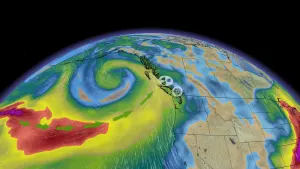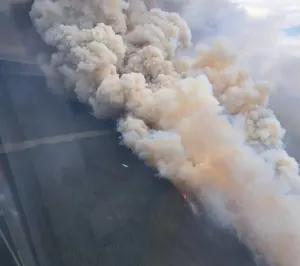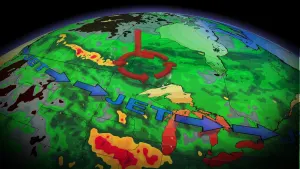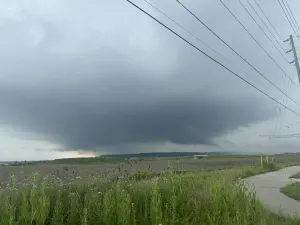
How fireweed offers hope amid B.C.'s worst wildfire summer on record
Visit The Weather Network's wildfire hub to keep up with the latest on the active wildfire season across Canada.
From empty lots in downtown Vancouver to the remote fire-ravaged forests of north and central B.C., fireweed plants — with their bright spike of purple blooms — are out in full force this summer.
They are tall and billowy, and populate desolate urban and rural spaces with great density.
And despite its name, its proliferation isn't a cause for concern: fireweed is not an exotic or invasive species in North America.
In fact, it's the opposite, says Lori Daniels, a professor of forest ecology at the University of British Columbia.
The fireweed, she says, is a sign of regeneration and a cause for hope.
RELATED: Meet the purple flower that thrives after wildfire — fireweed
"If you're seeing it in large abundance, that is the first sign of ecosystem recovery following a disturbance like a fire, and those plants are playing a really important ecological role in getting the forest rolling again."
Daniels' research team, in collaboration with the Bonaparte First Nation, has been documenting plant response to wildfires at 200 separate locations in B.C. since 2017.
"I can say with certainty, fireweed is one of the most fire-adapted species."
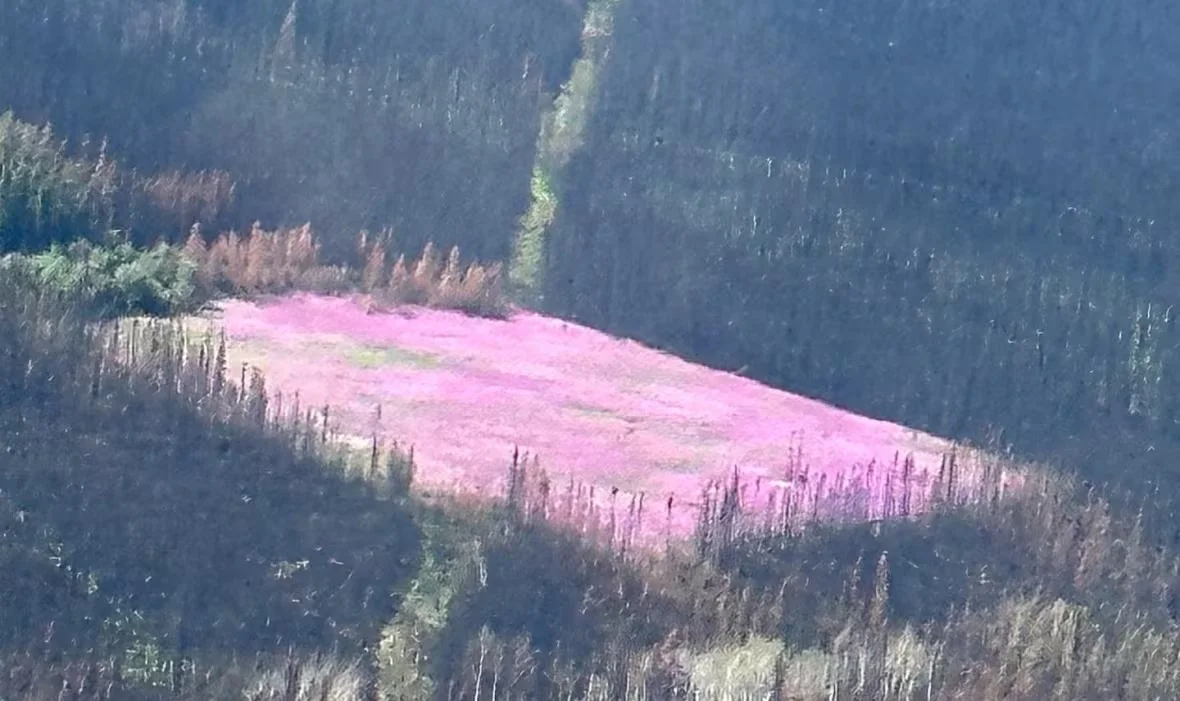
An abundance of fireweed plants grow and blossom amid a fire-ravaged forest in the area of the Donnie Creek wildfire, the largest ever recorded in B.C. (Submitted by Becky Grimsrud)
The 2023 wildfire season in B.C. has officially surpassed the 2018 season as the most destructive ever recorded, according to area burned.
Statistics from the B.C. Wildfire Service (BCWS) show wildfires have burned more than 15,728.98 square kilometres of land this year, breaking the record of just over 13,500 square kilometres set in 2018.
After a fire or landslide, the plant's numerous, tiny seeds — which spread quickly and easily in the wind — take advantage of the open space and access to sunlight, and use nutrients in the fire ash or exposed minerals on the ground, Daniels explains.
The plants grow quickly, then die back in the fall, she says. Their leaves, stems, and dead blooms drop to the forest floor and, in the absence of tree leaves and pinecones, the fireweed decomposes and becomes the first layer of soil.
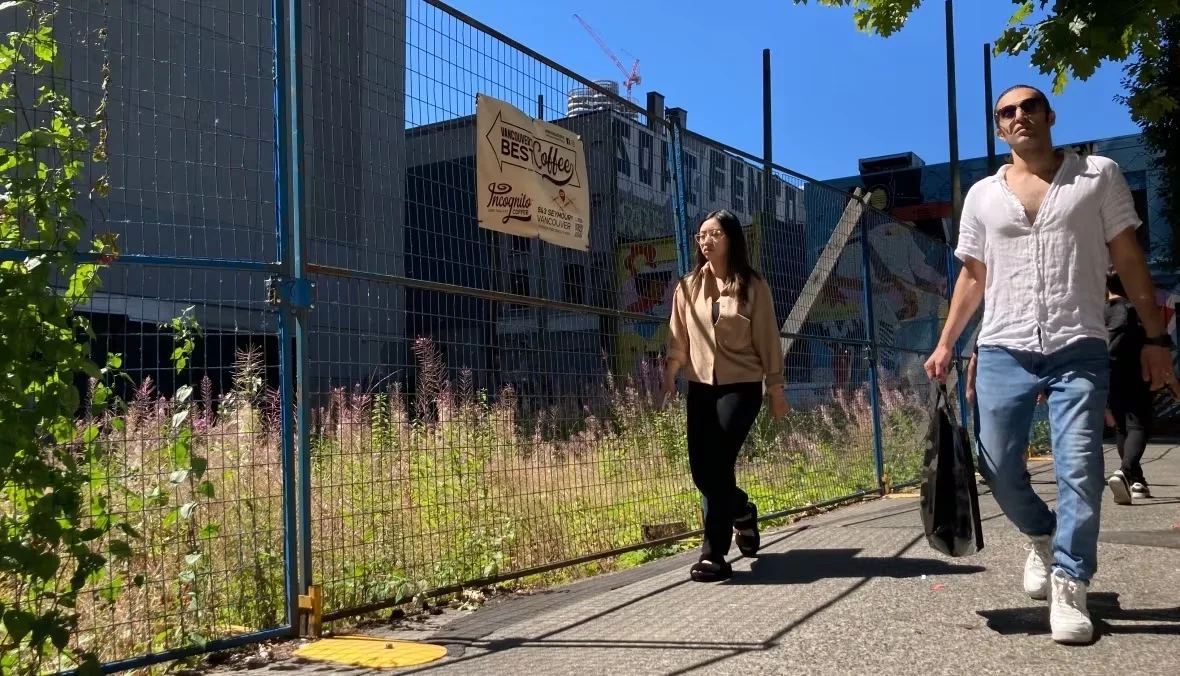
Fireweed grows and blossoms in an empty, abandoned lot on Robson Street in downtown Vancouver on Aug. 4, 2023. The plant is not an exotic or invasive species in North America. (Tessa Vikander/CBC)
A symbol of bounty
Kym Gouchie, a knowledge holder and member of the Lheidli T'enneh First Nation, says her ancestors have used fireweed for "many, many years" as food and fibre material.
"You can harvest the petals and make a beautiful sweet jelly," she says.
The plant fibres can also be made into string and rope, and when it's out in full bloom, it means the moose in the area are plump and well-fed, she says.
Afterward, when the plants have lost their blossoms and gone to seed, and appear cotton-like, she says it means there will be another six weeks until the weather turns cold.
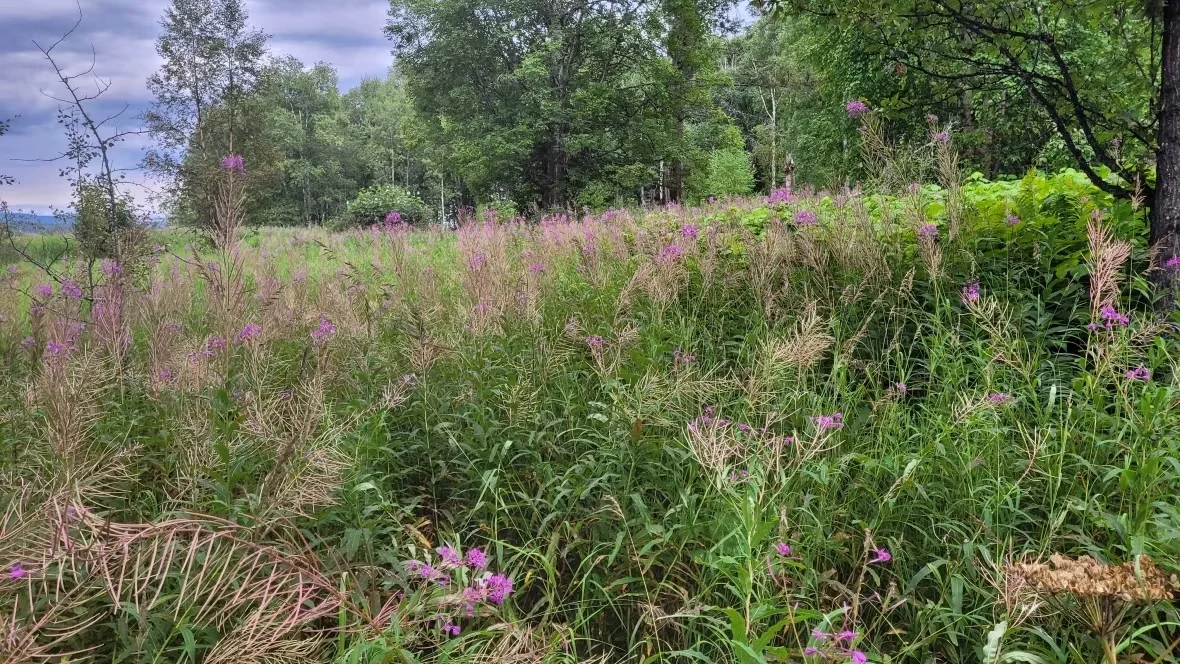
Fireweed plants blossom in abundance at Ginter's Meadow, Prince George, in the summer of 2023. After a fire or landslide, the plant's numerous, tiny seeds take advantage of the open space and access to sunlight. (Andrew Kurjata/CBC)
The fireweed is called "Kast'an" in the Dakelh language, Gouchie says, and is a symbol of bounty.
"It brings me a lot of joy and it just reminds me of our connections to the land and this place and of the abundance that we have in the north."
A promising sign
Although wildfires in B.C. can be dangerous and are becoming more severe with climate change, Daniels says it's important to remember that some amount of forest fires is a natural and healthy part of our ecosystems.
"There are still components of them that are adding to the diversity of the landscape and providing opportunities for the next generation of trees and plants."
After the 2017 Elephant Hill wildfire near Cache Creek, Daniels says she and her team were worried that certain forest areas wouldn't recover.

Fireweed is pictured on a bed of soil and garbage on a fenced-off lot in downtown Vancouver's Robson Street, on Aug. 4, 2023. (Tessa Vikander/CBC)
"It had burned so hot in 2017 that there were only dead trees in sight and there was nothing left on the ground except gravel and sand.
"Yet in May 2019, guess what was coming back on those sites in great abundance? It was the fireweed … our first example of resilience in the ecosystem."
Daniels says she's seen photos of fireweeds — posted on social media by her friends — growing abundantly in Northern Alberta, Yukon and Northwest Territories, places ravaged earlier this year by forest fires.
"Although these fires are intense and large and severe, our ecosystems have some resilience and will bounce back," she says.
"It's a promising view in a very hot, dry summer with a lot of fire and a lot of anxiety."
WATCH: How trees get a 'second life' after a storm
Thumbnail courtesy of Andrew Kurjata/CBC.
The story was originally written by Tessa Vikander and published for CBC News.






